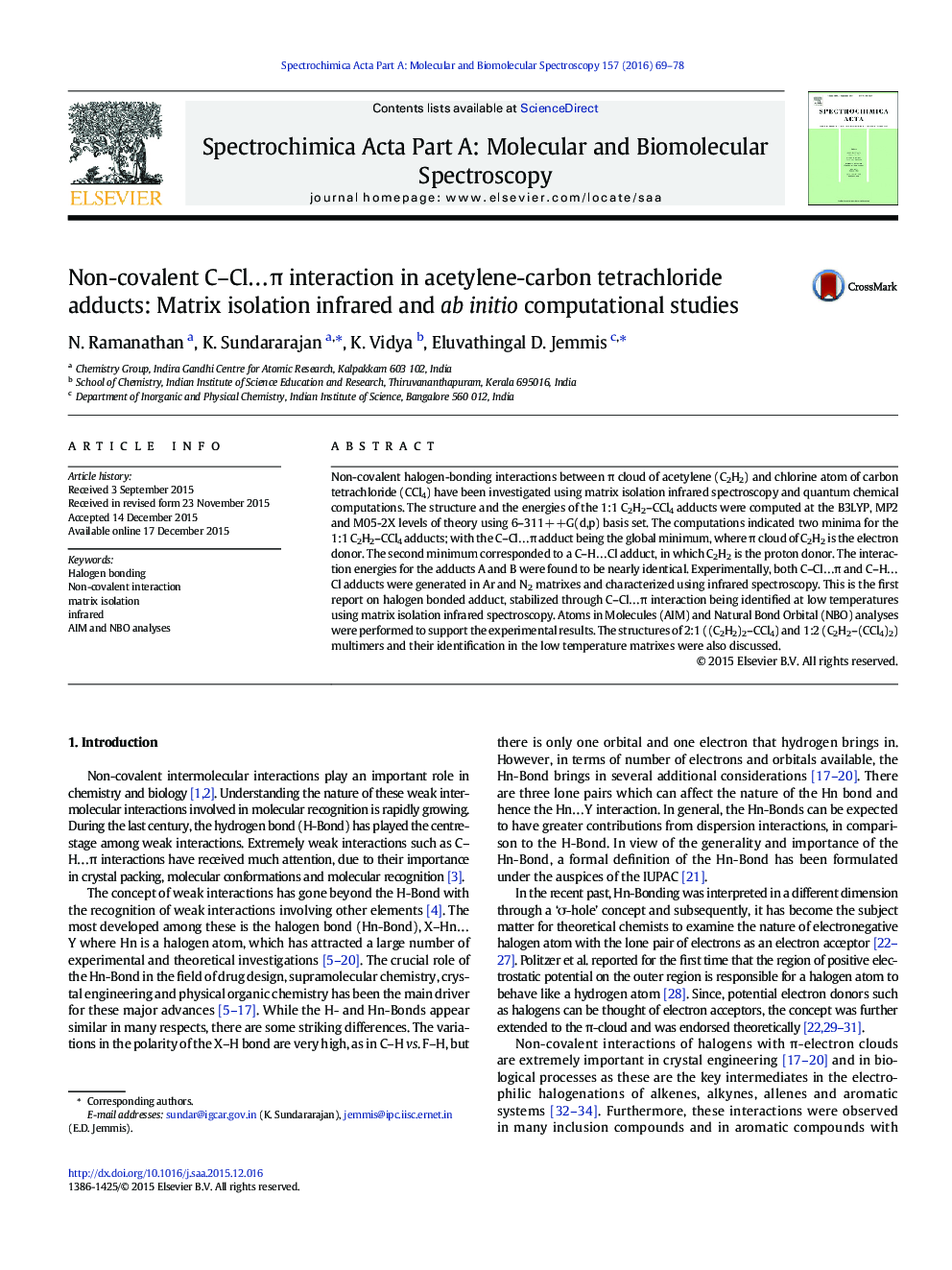| Article ID | Journal | Published Year | Pages | File Type |
|---|---|---|---|---|
| 1229318 | Spectrochimica Acta Part A: Molecular and Biomolecular Spectroscopy | 2016 | 10 Pages |
•Halogen bonded C-Cl…π interaction in C2H2-CCl4 adduct is experimentally evidenced.•AIM and NBO analyses accomplished to unravel the nature of interaction.•NBO analysis indicated that C-Cl…π adduct is stabilized through σ and π holes.
Non-covalent halogen-bonding interactions between π cloud of acetylene (C2H2) and chlorine atom of carbon tetrachloride (CCl4) have been investigated using matrix isolation infrared spectroscopy and quantum chemical computations. The structure and the energies of the 1:1 C2H2–CCl4 adducts were computed at the B3LYP, MP2 and M05-2X levels of theory using 6–311 ++G(d,p) basis set. The computations indicated two minima for the 1:1 C2H2–CCl4 adducts; with the C–Cl…π adduct being the global minimum, where π cloud of C2H2 is the electron donor. The second minimum corresponded to a C–H…Cl adduct, in which C2H2 is the proton donor. The interaction energies for the adducts A and B were found to be nearly identical. Experimentally, both C–Cl…π and C–H…Cl adducts were generated in Ar and N2 matrixes and characterized using infrared spectroscopy. This is the first report on halogen bonded adduct, stabilized through C–Cl…π interaction being identified at low temperatures using matrix isolation infrared spectroscopy. Atoms in Molecules (AIM) and Natural Bond Orbital (NBO) analyses were performed to support the experimental results. The structures of 2:1 ((C2H2)2–CCl4) and 1:2 (C2H2–(CCl4)2) multimers and their identification in the low temperature matrixes were also discussed.
Graphical abstractFigure optionsDownload full-size imageDownload as PowerPoint slide
